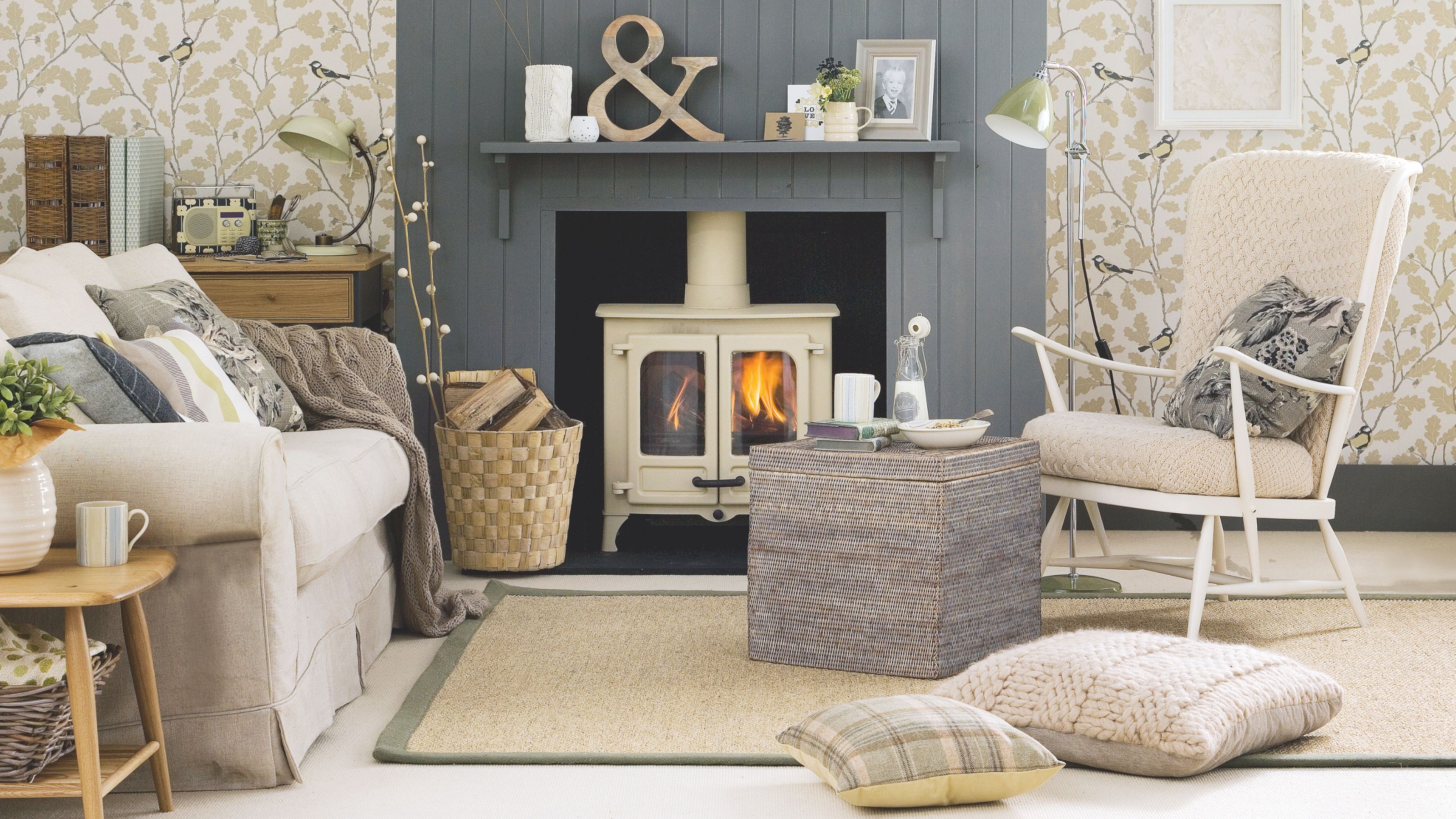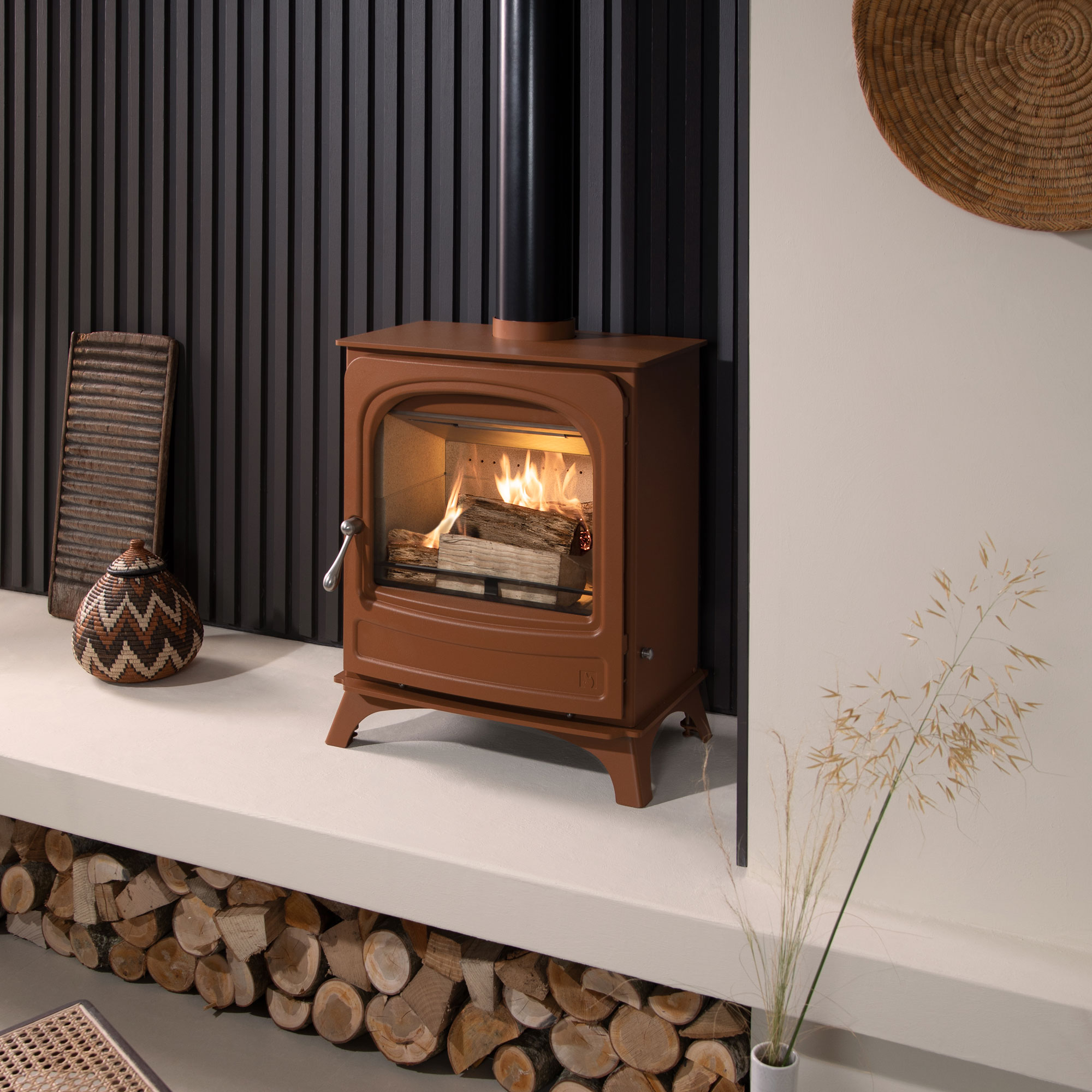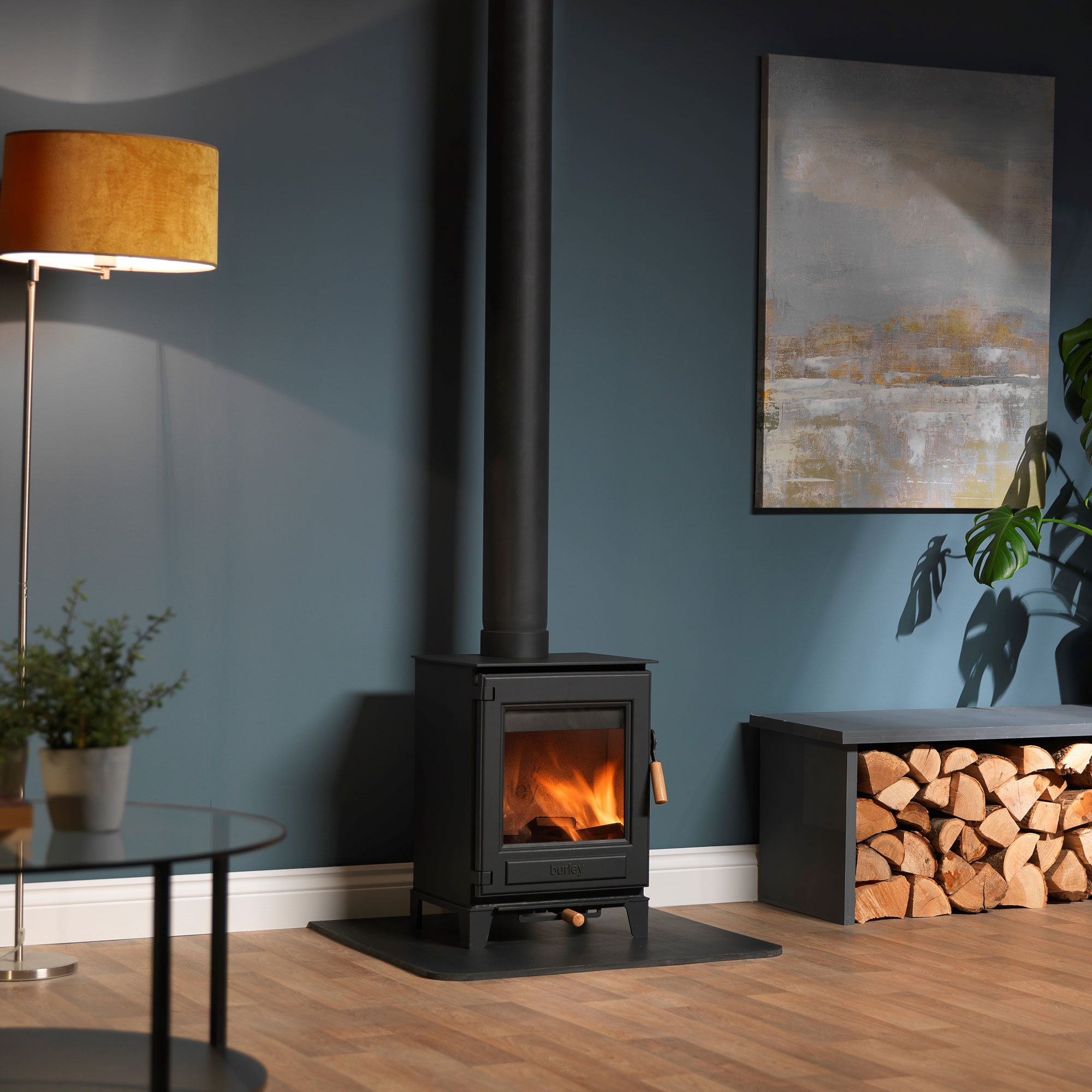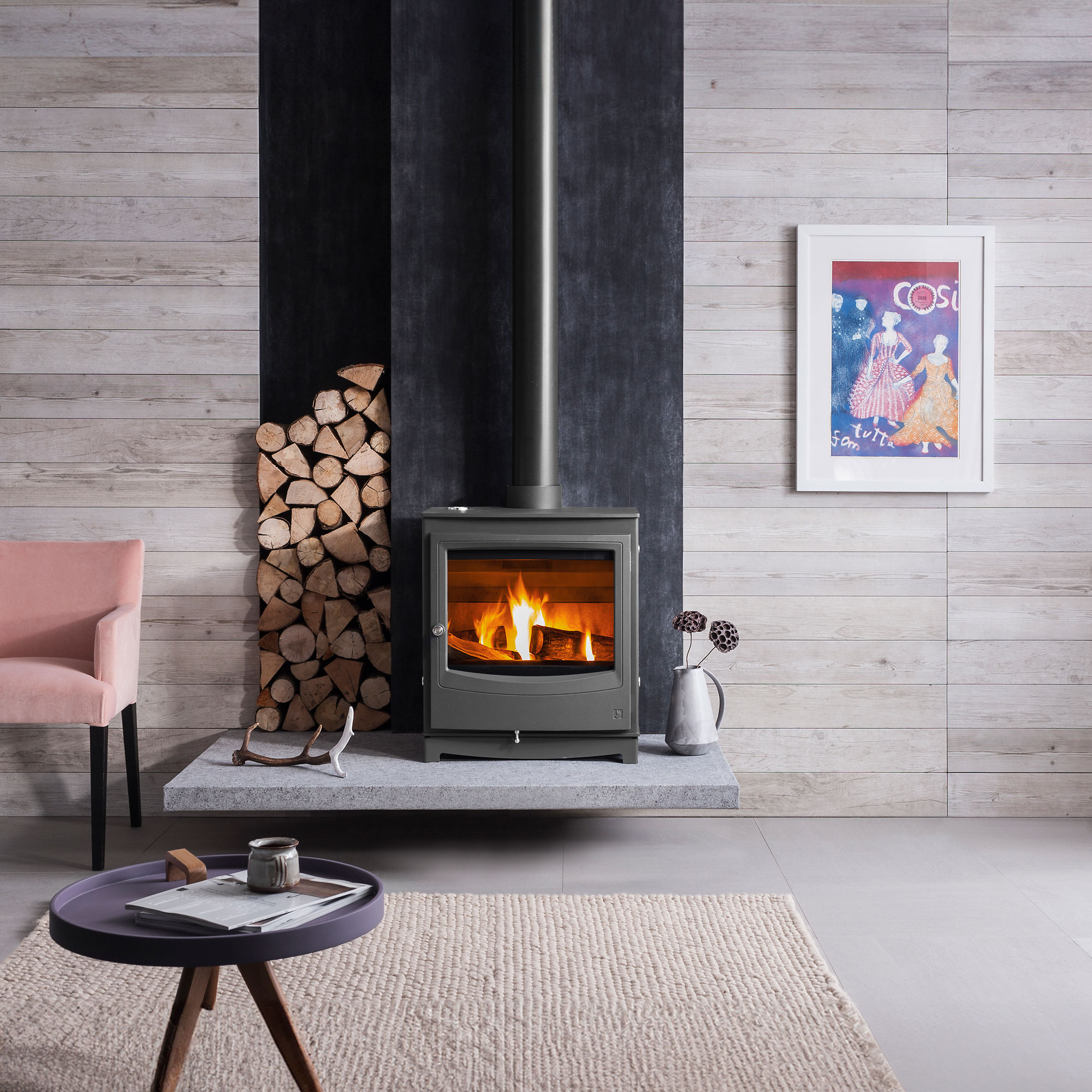I’ve navigated log burner building regulations myself — this is what all homeowners need to make sure they know to obtain the necessary consent
Your complete guide to complying with wood burning stove building regs – including how much it'll cost you


As with most aspects of home renovation, there are building regulations to adhere to when installing a log burner, and if you want to ensure your's delivers heat safely within your house, you need to understand what these are.
Wood burning stoves are a fantastic way to bring heat into all kinds of spaces and, in the case of my own log burner, I am not sure where we'd be without it once winter hits and our draughty old house lets in the chill.
Thankfully, the building regulations to install a log burner need not be complicated. Our expert-led guide explains everything you need to know in order to get that completion certificate in your hands and your fire blazing away safely.
Do you need building regs for a log burner?

In short, yes, everything from the model of log burner you select to the way in which it is installed must comply with building regulations.
Fail to adhere to the rules and you will not get a Certificate of Compliance, which could make selling your home hard should you decide to do so in the future.
Additionally, ignoring the regs mean you are risking the safety of your household, as well as rendering the stove less effective than it could be.
'It is not red tape, it’s a checklist for you to be sure your stove is legal, safe and efficient and it will be genuinely worth the money you spend as a capital improvement to your home,' points out Farook Member, director and home improvement expert at QS Supplies.
Sign up to our newsletter for style inspiration, real homes, project and garden advice and shopping know-how

Farook Member is the director of QS Supplies and a seasoned expert in the home improvement and bathroom industry. With over three decades of experience, Farook has been at the forefront of innovation and quality since founding QS Supplies in 1990.
Which building regs apply to log burners?
The building regulations for log burners are there not only to ensure that your new installation poses no safety risks, but also that it won't damage other areas of your home.
'Homeowners must comply with Document J of the Building Regulations, HETAS guidelines, and the manufacturer’s installation instructions,' explains Gregg Robinson, technical advisor at ESSE Engineering Ltd. 'These cover essential safety and ventilation requirements, such as flue design, hearth specifications, and safe distances from combustible materials.'
The wood burner ideas and model of stove you choose also need to comply with certain regulations.
'If you are in a Smoke Control Area, you can only burn wood on a stove that is DEFRA-certified,' explains Farook Member. 'Selecting the wrong model can put you in breach of the law.'

Gregg Robinson is the technical support advisor at ESSE Engineering, a renowned stove and cooker manufacturer based in Barnoldswick on the Yorkshire-Lancashire border. With over 30 years of experience as a heating engineer, Gregg brings extensive industry knowledge to his role.
Can you install your own log burning stove?

In the case of my own log burning stove, we took a DIY route towards its installation. While this was not illegal by any means, it did mean familiarising ourselves fully with the relevant regs and informing building control of the work. On reflection, I am not sure we'd do it again as, on top of ensuring we were complying with building regulations for extensions, this was just another thing to think about.
'Contacting a HETAS installer is the best way to get your stove fitted properly,' states Joanna Humphreys, fire & stove expert for Direct Stoves. 'Since any change to your chimney is considered building work, there are a number of building regulations that you will need to adhere to. One of the many benefits of having a HETAS installer fit your stove is that they already know the wood burning stove regulations, saving you the headache of reading up on them yourself.'
'You can carry out the installation yourself but you must strictly follow the manufacturer’s instructions, Document J, and HETAS guidelines,' picks up Gregg Robinson. 'Once complete, you must notify your local authority’s building control department, who will inspect and approve the installation if it meets requirements.'

Joanna Humphreys is a fire and stove expert at Direct Stoves, an online stove retailer selling an array of wood burning, multi fuel, gas, and electric stoves.
Do building regs affect the type of stove you can have?
It isn't just the installation of your log burner that needs to meet building regulations. The model of stove you choose also needs to conform – in fact this is one of the most important things to know before installing a log burner.
'When searching for the right wood burning stove, make sure to check out those approved by the Department of Environment, Food, and Rural Affairs (DEFRA),' advises Joanna Humphreys. 'Such stoves have been engineered to satisfy the high smoke emissions standards of the UK government. Picking a DEFRA-certified stove not only ensures compliance with Smoke Control Area policies but also your part in keeping the air clean and the world greener.
'In addition to DEFRA, the newest models are designed to meet and exceed strict EcoDesign standards,' continues Joanna. 'They are built to burn fuel as efficiently as possible and many are now clean-burning and therefore considered carbon neutral, meaning it does not produce more carbon dioxide (CO2) than is already present in the carbon cycle.'
What happens if you ignore the building regulations?

Whether you are building an extension or simply carrying out a few easy home upgrades, to ignore the building regulations is incredibly unwise.
'Non-compliant installations cannot be legally signed off, and without a Certificate of Compliance, your home insurance may be invalidated,' explains Gregg Robinson.
'Additionally, local building control or a professional installer may classify the stove as unsafe, requiring costly changes or removal.'
How much does it cost to get log burner building regs approval?
If you use a HETAS-approved installer, their fees should include building regs approval and a final completion certificate. If not, you will need to arrange, and pay for, this yourself.
Fees vary from council to council, but expect to pay between £400-£600 for the application fee (which you will usually have to pay upfront) and an inspection fee that will likely be charged once work is commenced.
If additional visits are required, this will cost you extra – and if any of the work you have carried out fails to comply with the regs, you will need to pay to put it right.
FAQs
Do you need planning permission for a log burner?
Unless you live in a listed property, it is highly unlikely that you will require planning permission in order to install a wood burning stove.
'In the UK, you don’t need any prior planning permission to install a wood burner, if the work is carried out by a HETAS installer,' explains Joanna Humphreys.
'In this case, your installer is qualified to certify the works themselves, and will issue a Certificate of Compliance as proof – this will be signed by your installer and used to notify your council of the building work.'
What is the easiest way to comply with the building regs?
If you are in any way worried that your stove won't be safe or comply with the relevant building regulations, there are some steps you can take to remove the risk.
'The simplest and most reliable way is to use a HETAS-registered installer,' says Gregg Robinson. 'They are trained and certified to carry out installations that meet all legal and safety standards, and they can self-certify the work, providing a Certificate of Compliance.
Do take time to consider the fireplace ideas that you'll use to house your new log burner (unless you plan on opting for a freestanding model of course). The surround also needs to take into account building regs.

Natasha has been writing about everything homes and interiors related for over 20 years and, in that time, has covered absolutely everything, from knocking down walls and digging up old floors to the latest kitchen and bathroom trends. As well as carrying out the role of Associate Content Editor for Homebuilding & Renovating for many years, she has completely renovated several old houses of her own on a DIY basis.
You must confirm your public display name before commenting
Please logout and then login again, you will then be prompted to enter your display name.